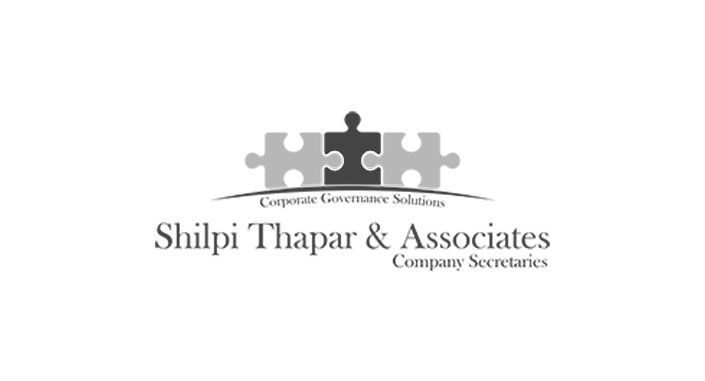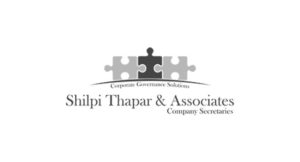Posted by: CS Shilpi Thapar
The Insolvency and Bankruptcy Code, 2016 (hereinafter referred to as “IBC”) was passed by the parliament on May 11, 2016, and received presidential assent on May 28, 2016, and was notified in the official gazette on the same day.
India currently ranks 136 out of 189 countries in the World Bank’s Index on the ease of resolving insolvencies due to its complex insolvency regime. The average time to resolve insolvency in India is 4.5 years, as compared to 0.8 years for Singapore and 1 year in London; India has the lowest recovery rate in the world at about 20% of debt value as per World Bank Report (2014).
India’s banking industry is in an emergency situation as banks bad debts are increasing up. According to central bank data, stressed assets (which include gross bad loans, advances whose terms have been restructured and written-off accounts) rose to 14.5% of banking sector loans at the end of last year which is almost Rs 10 trillion of loans that are stuck. Banking sector is required to take immediate and serious steps to free up this money for doing business.
Previously, there were multiple legislations related to Insolvency and Bankruptcy i.e:
- Chapter XIX and Chapter XX of The Companies Act,2013
- Section 391of Companies Act,1956
- RDDBFI Act, 1993
- SARFAESI Act,2002
- SICA Act,1985
- The Presidency Town Insolvency Act,1920
- Chapter XIII of the LLP Act,2008
The main object of IBC is to consolidate and amend the laws relating to reorganization and insolvency resolution of corporate persons, partnership firms and individuals in a time bound manner for maximisation of value of assets of such persons, to promote entrepreneurship, availability of credit and balance the interests of all the stakeholders including alteration in the order of priority of payment of Government dues and to establish an Insolvency and Bankruptcy Board of India, and for matters connected therewith or incidental thereto.
IBC majorly empowers creditors. The creditors will gain adequate control and powers with an introduction of this code. A single default on part of corporate can trigger the applicability of this Code. So corporate are required to plan their finances in advance, implement proper internal cash flow control systems so that there is no change of any default of their timely commitments to the creditors.
The government notified the rules by which companies can go through liquidation under the Insolvency and Bankruptcy Code (IBC), 2016.
The regulations for the liquidation process are part of the rules being notified by the Insolvency and Bankruptcy Board of India (IBBI) to implement the code and, in the process, improve the ease of doing business in India.
The government earlier notified rules empowering the National Company Law Tribunal (NCLT) to be the appropriate adjudicating authority to handle corporate insolvency matters under the code.
The government made IBBI operational from 1 December 2016. Chaired by M.S. Sahoo, the Board will act as the regulator of an ecosystem including insolvency professionals, agencies and information utilities.
What remain unaddressed are the provisions of the insolvency code pertaining to individual insolvency resolution, which will be under the jurisdiction of debt recovery tribunals. The government is yet to notify regulations related to personal insolvency.
Features of the Code
- Insolvency and Bankruptcy Code, 2016 (Code) provides a specialized forum to oversee all insolvency and liquidation proceedings for individuals, small and medium enterprise (SMEs), Limited Liability Partnerships and corporates.
- It empowers all classes of creditors (secured and unsecured lenders, employees, trade creditors, regulatory authorities) to trigger a resolution process in case of non- payment of a valid claim.
- Provides for immediate suspension of the Board of Directors and promoters’ powers.
- Provides for an insolvency professional to take control of the corporate debtor.
- Enables a ‘stand-still period’ which provides stakeholders time to facilitate discussions and arrive at a common resolution rather than running independent processes.
- Provides for a balanced approach to rehabilitation and recovery and provides for compulsory liquidation of corporate debtors in the event the resolution has not been agreed within 180 days of the resolution process.
The code aims to resolve insolvencies in a strict time-bound manner – the evaluation and viability determination must be completed within 180 days which can be extended to 270 days.
Institutional Infrastructure
- Adjudicating Authority:
The adjudicating authority for corporate insolvency and liquidation is the NCLT. Appeals from NCLT orders lie to the National Company Law Appellate Tribunal and thereafter to the Supreme Court of India. For individuals and other persons, the adjudicating authority is the DRT, appeals lie to the Debt Recovery Appellate Tribunal and thereafter to the Supreme Court.
2.Insolvency and Bankruptcy Board of India (IB Board)
It would consist of members including representatives from MCA, MoF, Reserve Bank of India and would regulate the appointment of insolvency professionals, information Utilities and promote transparency in governance. The board will also make model bye-laws for regulating insolvency professionals.
- Information Utilities
A notable feature of the Code is the creation of information utilities to collect, collates, authenticate and disseminate financial information of debtors in centralized electronic databases. The Code requires creditors to provide financial information of debtors to multiple utilities on an ongoing basis.
- Insolvency Resolution professionals
The Code provides for insolvency professionals as intermediaries who would play a key role in the efficient working of the bankruptcy process. The Code contemplates insolvency professionals as a class of regulated but private professionals having minimum standards of professional and ethical conduct.
Who can file for corporate insolvency resolution?
- Financial Creditor
- Operational Creditor
- Corporate Debtor
Corporate Debtors: Two-Stage Process:
To initiate an insolvency process for corporate debtors, the default should be at least INR 100,000 (which limit may be increased up to INR 10,000,000 by the Government)
- Insolvency Resolution Process,
- Liquidation
Insolvency Resolution Process for Individuals/Unlimited Partnerships
For individuals and unlimited partnerships, the Code applies in all cases where the minimum default amount is INR 1000 and above (the Government may later revise the minimum amount of default to a higher threshold). The Code envisages two distinct processes in case of insolvencies.
Under the automatic fresh start process, eligible debtors (basis gross income) can apply to the Debt Recovery Tribunal (DRT) for discharge from certain debts not exceeding a specified threshold, allowing them to start afresh.
Timelines:
- The application for Insolvency on default of debt or interest payment can be made by any financial or operational creditors.
- Insolvency Professional (IP) to be appointed by the IBBI and approved by creditors committee. The IP will take over the operations of the company and from the date of IP appointment, the powers of Board of Directors shall be suspended and vested in IP. He shall not be liable for any prosecution or liability if his acts are done with good intentions.
- Moratorium period of 180/270 days shall be fixed by NCLT, adjudicating authority and in this period, no action shall be taken by the company and resolution plan shall be processed and approved by creditors committee.
- The creditors’ committee shall be constituted and doesn’t include related parties. 75% of creditor should approve this resolution plan for its implementation.
- If resolution plan is not approved by creditors or NCLT then liquidation process shall be initiated and IP can also act as liquidator in that asset. It shall perform the role of formation of the estate of assets, verify and value it for creditors’ claims.
- The order of distribution of claims shall be:
- Insolvency related costs
- Secured creditors and workmen due up to 24 months
- Other employees salaries/dues upto 12 months
- Financial debts (unsecured creditors)
- Government dues(up to 2 years)
- Any remaining debts & dues
- The decision of Creditors Committee shall be binding on all debtors and creditors of the company.
Opportunities for Professional Members
The notification of the Insolvency and Bankruptcy Code, 2016 (the ‘Code’) and the Regulations/Rules made thereunder have opened up a plethora of opportunities for the professionals in the areas of Corporate Insolvency Resolution Process, Corporate Liquidation Process and Individual Insolvency Resolution process.
ICSI Insolvency Professionals Agency has started enrolling professionals having 15 or more years of practice as Company Secretary, Chartered Accountant, Advocate, Cost Accountant, as Insolvency Professionals for a period of 6 months
Challenges ahead:
Overall this legislation is a huge step towards the ease of doing business in India and has the potential to bring business practices in India closer to more developed markets over the long term.
The Code promises to bring about far-reaching reforms with a thrust on creditor driven insolvency resolution. It aims at early identification of financial failure and maximizing the asset value of insolvent firms. The Code also has provisions to address cross-border insolvency through bilateral agreements and reciprocal arrangements with other countries.
There are many challenges ahead which need to be addressed for successful and effective implementation of this code.
- To involve high-quality professionals to establish the standards and practices to be adopted to assist IBBI for effective implementation of this code.
- NCLT with limited benches and infrastructure will really have a hard time to handle so much pressure of disposing of the cases. The eligibility of initiating new cases under IBC is widened so this will create a massive burden for the NCLT.
- Limited no of Judges and Professionals will not be able to handle pressure to honor the timeline of 180 days for implementation of the code as ambiguities may arise in the process.
- The entire system and process will be controlled and monitored by the government which will have its own hurdles.
In spite of all these challenges, this unified regime offers a time-bound resolution process for insolvency resolution and liquidation, aimed at maximizing the value of a distressed business, significantly improving debt recovery rates thereby considerably contributing to the growth of Indian economy.


